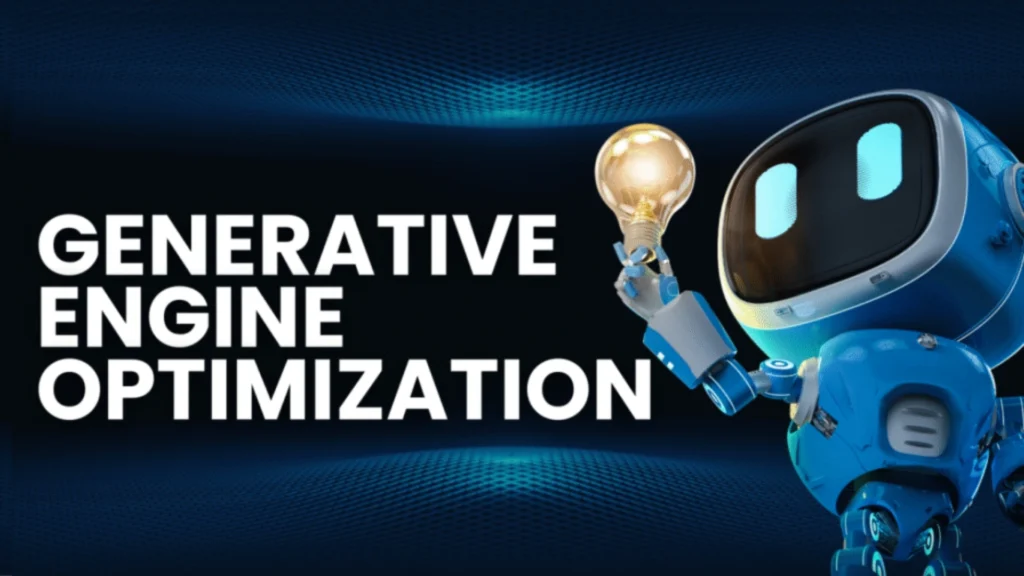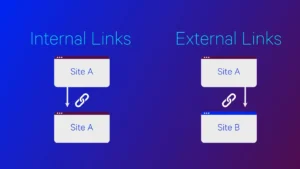Today’s people don’t want a long list of websites when they search online. They now wish to direct answers from tools like ChatGPT and Google’s AI Overviews.
Generative Engine Optimization has become pivotal due to this shift. While SEO focuses on climbing a website list, GEO is about creating content so precise and accurate that AI will use it as a source.
Mastering GEO is key for brands to succeed online now. It’s because AI is now how most people find information.
This blog will explore:
- What is Generative Engine Optimization
- Why Does GEO Matter?
- How AI Ranks Your Content?
- GEO vs. SEO: What’s the Difference
- GEO Content Creation: A Step-by-Step Guide
- The GEO Handbook: 30 Proven Tricks
- How to Write for AI?
What is Generative Engine Optimization?
Generative Engine Optimization (GEO) is a new strategy that helps your brand’s information get found and used by AI tools.
Reports show that 63% are getting visits from AI search engines. And 58% of users are now using AI tools instead of regular search engines to look for products or services.
SEO helps your website rank on traditional search pages. GEO ensures your information is designed to make AI search results easily find and use your content.
GEO is not a replacement for SEO. It’s a strategy that helps your online content and reputation work better with AI search engines. GEO ensures that such tools can easily locate your content and verify the facts you provide.
Why Does GEO Matter?
- AI‑first discovery: Search engines now provide direct answers to users. And people may not click on a website because of this. So people might never even open your page if your content isn’t selected for that direct answer.
- Building Authority: Search engines are now giving higher rankings to websites that have original and credible information. It’s notable for its content that is easy to read and understand.
- Connected Research: AI search tools often lead users to more questions. Companies that provide clear next steps in their content are more likely to guide users to their brand.
How AI Ranks Your Content
Step 1: AI tools find information everywhere online, including websites, news, videos, and social media.
Step 2: They then organize this information and prefer well-structured content, like tables or lists, that is easy to understand.
Step 3: The AI constructs an answer using bits of information it found from different sources. It will also provide a link back to the original website.
Step 4: AI will then verify its answers for safety and make sure the facts are correct by comparing them with different sources. It will also avoid using spam or copied content.
Step 5: The AI will also suggest other questions to help you learn more about the topic.
Your job in GEO is to provide unique and structured content that is helpful for this entire process.
GEO vs. SEO: What’s the Difference
| Aspect | SEO | GEO |
| Objective | Getting your website link to appear on a search page. | Getting your content used directly in an AI answer. |
| Optimization Focus | Entire web pages and keywords. | Specific facts, definitions, and how-to steps. |
| Content Style | Long articles and stories. | Easy-to-read formats like bullet points, tables, and checklists. |
| Proof of Quality | Links on your website and showing your expertise. | Your data, clear citations, and the author’s identity. |
| Distribution Channels | Mostly on Google. | Everywhere people search, like YouTube, Reddit, and social media. |
| Success Metrics | How high your website ranks and how much traffic you get. | How often is your content used in AI answers and mentioned as a source. |
GEO Content Creation: A Step-by-Step Guide

Demand Mapping
Focus on what people are trying to do while creating content. You must also think about the related questions that AI searches suggest.
Then organize your topics into different types, such as:
- Informational: For basic definitions or comparisons.
- Transactional: For questions about pricing or alternatives.
- Local: For questions about what is “near me.”
- Proprietary: For questions that only you can answer with your special knowledge.
The final result is a GEO query map. This map lists the main questions and the best way to format the answers like in a table or a checklist.
Building Blocks of Authority
Organize your information into small and clear sections. This helps create content that AI models love.
- Definitions: Write clear definitions (about 100-150 words) with a key takeaway and a source.
- Checklists: Use numbered lists for procedures. Keep each step short (under 20 words).
- Comparisons: Create tables to compare things. Include a feature along with its measurement and why it matters.
- Statistics: Provide the latest statistics and explain where you got the numbers.
- FAQs: Use a question-and-answer format. Keep each answer under 60 words.
- Conclusions: Give clear takeaways or summaries that you can confidently support.
A great tip is to use consistent headings like “Definition,” “Pros,” and “Cons” to make your content easier to understand.
Make Your Content AI-Friendly
- Use Special Code: Add schema markup codes to your website to mark important information like FAQs and reviews. This helps AI systems understand exactly what your content is.
- Give Facts Context: Use a small bit of code when sharing a fact or statistic. It explains what the number means and where you got it.
- Make Data Shareable: Make your key data available for download and put it into tables that are ready for quick answers in search results.
- Write clear captions: Add a caption under every chart that clearly states the main point or conclusion it shows.
Prove Your Credibility
Do the following to show your content is legit and reliable:
- Show your expertise: Display the author’s name and credentials. Also, explain your research methods, share your original data, and show when the content was last updated.
- Publish your research: Create and publish original work like surveys or datasets. Always provide a link to the source data file.
- Prove your Content’s Origin: Use basic methods to show you are the source. This includes watermarking your images, digitally signing your PDFs, and using a consistent author name and clear policy pages on your site.
Expand Your Content’s Reach
Follow these steps to get your content featured in AI overview:
- Create content for social media: Turn your best claims into short videos like Reels and slideshows. Share these on platforms where your audience spends time.
- Make YouTube explainers: Repurpose your content into longer videos for YouTube. Use chapters and display text that match the headings on your website to help people navigate.
- Engage in online communities: Answer questions on forums like Reddit and share links to your website as a transparent source for more information.
- Prove your Content’s Origin: There are several methods that help you show you are the real source. This includes watermarking your images and using a consistent author name and clear policy pages on your site.
Ongoing Enhancements
See where and how your content appears in AI answers. Keep a log of all the content you create and note every time an AI mentions or cites you. You should also review your GEO strategy every three months to see what’s working and what needs to be improved.
The GEO Handbook: 30 Proven Tricks
Content Credibility
- Create a single, main definition page for your key terms.
- Add a short one-line summary at the top of long articles.
- Add a source and the last updated date to every fact you share.
- Include a section explaining how you got your data, including dates and samples in research articles.
- Offer short and bulleted fact sheets under 250 words for reporters and AI models.
- Create pages that compare your product to competitors by showing their pros and cons.
- Have pages that clearly explain your pricing with examples.
- Publish a yearly report with the collected data and ensure it is easy to download.
- Make your data tables easy to add to other websites. Plus, use a simple link for every fact you share.
- Create author pages that showcase the authors and their areas of expertise.
- Use schema markup code to tag content like FAQs, how-to guides, and product pages.
- Add a clear caption below every chart and image.
- Keep your website URLs short and simple.
- Make your most important data available for developers to use if possible.
- Keep a record of all product updates and corrections you’ve made to your research.
Content Distribution
- Turn your best web pages into short, three-slide presentations for LinkedIn.
- Create 90-second videos for YouTube that summarize your main points.
- Make comparison tables into downloadable PDFs with your logo and a date.
- Answer the top questions on community forums and include your tables and sources.
- Share your best charts and stats with industry newsletters.
Brand & Reputation
- Create one central page on your website to share key facts about your company and its products.
- Create a page that neutrally clears up common misunderstandings about your brand.
- Keep your press kit current. It should include your logos, company details, and biographies of your team members.
- Write short and factual answers for common searches about your brand.
- Create pages that show reviews from other websites along with the date.
Measurement & QA
- See how often you are included in the first AI answer for your key topics.
- See how often your website is mentioned as a source compared to your competitors.
- Measure the sales that come from a user who first saw an AI answer.
- Test your top 25 questions in different AI tools and keep a record of the results once every month.
- Create a checklist of tips for making your content easy for AI to use.
How to Write for AI?
Here’s how you can write content that AI loves to read and share:
- Start your article with a key takeaway.
- Use bullet points for key facts and avoid long paragraphs.
- Create a clearly labelled section for definitions if possible.
- Include at least one table or action plan to compare things or list steps.
- Be sure to include both source and date for every fact you mention.
- Use schema codes to label content like FAQs, tutorials, or products.
- Add a caption to every chart or image that explains its central point.
- Show the author’s name along with their qualifications and the date their content was last updated.
- Make your statistics available in a downloadable file.
- Be clear about any personal reasons or ties that might affect your information.
Conclusion
Generative Engine Optimization is a pivotal new strategy for your brand. This helps your content get featured directly in answers by AI tools like Google and ChatGPT. It’s much more effective than just appearing in a list of search results.
Your content must be both transparent and credible to ensure AI shows it in search results. GEO works with SEO by focusing on a simple system. You must create small and clear data points and prove you are the source of the information. Plus, you can share your content widely and track how often AI uses it.
FAQs
Q1. What is Generative Engine Optimization?
Generative Engine Optimization is the process of improving your content so that AI tools can easily find and quote it in their generated answers.
Q2. How does GEO differ from SEO?
SEO focuses on getting clicks, while GEO focuses on getting your content quoted by AI. This requires clear and verified information.
Q3. Is GEO replacing SEO?
No. GEO and SEO work together. One does not replace the other. SEO still helps you get traffic from specific search queries. While GEO ensures that your content appears in AI-generated answers and helps new people find your brand.
Q4. Why are FAQs important for GEO?
FAQs are great since they match the way people naturally ask questions. Using a schema markup code to organize your content helps AI tools provide precise and accurate answers.
Also Read:
Google Gravity or Do a Barrel Roll






